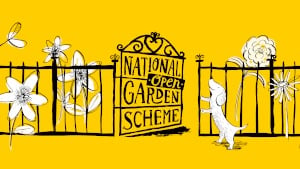About Chevening
The gardens at Chevening today reflect four main stages of development since the 17th century.
It is believed that sometime after 1688 Thomas Lennard, 1st Earl of Sussex, began to lay out formal gardens round an ornamental canal to the south of the house. General James Stanhope, 1st Earl Stanhope, who bought the estate from Lord Sussex’s heirs in 1717, continued within this design. He acquired the parkland to the south of the garden and his collection of Roman tombstones, sheltered by a later structure known together with the tombstones as “Fort Mahon” after one of his victories during the War of the Spanish Succession, is still on the west side of the lake. The original garden plan may have been influenced by the formal style of André Le Nôtre (1613-1700), who worked in England as well as at Versailles, and later by the naturalism of Charles Bridgeman (1690-1738). The busy Earl Stanhope, who was effectively Prime Minister to King George I until his death in 1721, built up a collection of eleven books on gardening.
The 3rd Earl Stanhope was a scientific inventor of great originality and industry. His most durable legacy proved to be the Stanhope printing press, but he also trialed prototypes of a steam-powered paddle-ship on the ornamental canal, with family members and servants acting as crew. From 1774, in his father’s lifetime, he altered the gardens to reflect the less formal style then fashionable. He laid out Chatham’s Ride and possibly the Keyhole on the Downs to the north of the house, at the suggestion of his cousin and later father-in-law, William Pitt the Elder, 1st Earl of Chatham. In later life he seems to have lost interest in the gardens, devoting himself and his fortune to scientific invention. By the time he died in 1816 his son and heir declared that he had inherited a “house standing in a hayfield”.
The 4th Earl was a gifted amateur landscape gardener who throughout his adult life travelled widely in Europe. He was a founder member of the Medico-Botanical Society of London and a cousin of Sir Joseph Banks, first director of Kew Gardens. Under his direction the Lake with its islands assumed its present form on the site of the earlier canal and basin. He introduced Italian gardens and a sloping lawn to the west and south of the house and planted many specimen trees. He created the Maze designed by his grandfather and round the Lake established pleasure grounds with winding gravel paths. On his death in 1855 he left, along with his will, instructions to his successors to “leave unaltered the sight and arrangement of the said gardens, pleasure grounds, parks, woods and plantations”. After his death no major structural changes to the garden were made while the Stanhopes lived at Chevening.
On the 7th Earl’s death in 1967 the Chevening Trust took over the House and Estate, which are run at no cost to the public purse. The gardens had been maintained for some time at only a basic level and had become overgrown: the Trustees therefore invited Elizabeth Banks, later President of the Royal Horticultural Society, to take them in hand. It is Elizabeth Banks’s design that you see today, recalling features of the earlier garden plans, particularly that of the 4th Earl. Her work has been developed by the current garden designer, George Carter, to include more of the 18th Century. The Head Gardener, Chris Coombs, works within his plan, in collaboration with garden expert Marian Boswall.
Recent developments include a new topiary walk designed by Marian Boswall in the former Flower Garden, now renamed the Pitt Garden in commemoration of the close interrelationship between the Stanhope and Pitt families, who between them gave Britain three 18th Century prime ministers. Extensive restoration work is being undertaken in various of the wooded compartments or “bosquets”.
.
Website:
https://www.cheveninggardens.com
.jpg)
.jpg)
.jpg)
.jpg)
.jpg)
.jpg)
.jpg)
.jpg)
.jpg)
.jpg)
.jpg)
.jpg)
.jpg)
.jpg)
.jpg)
.jpg)
.jpg)
.jpg)


.jpg)
.jpg)

.jpg)
.jpg)
.jpg)
.jpg)